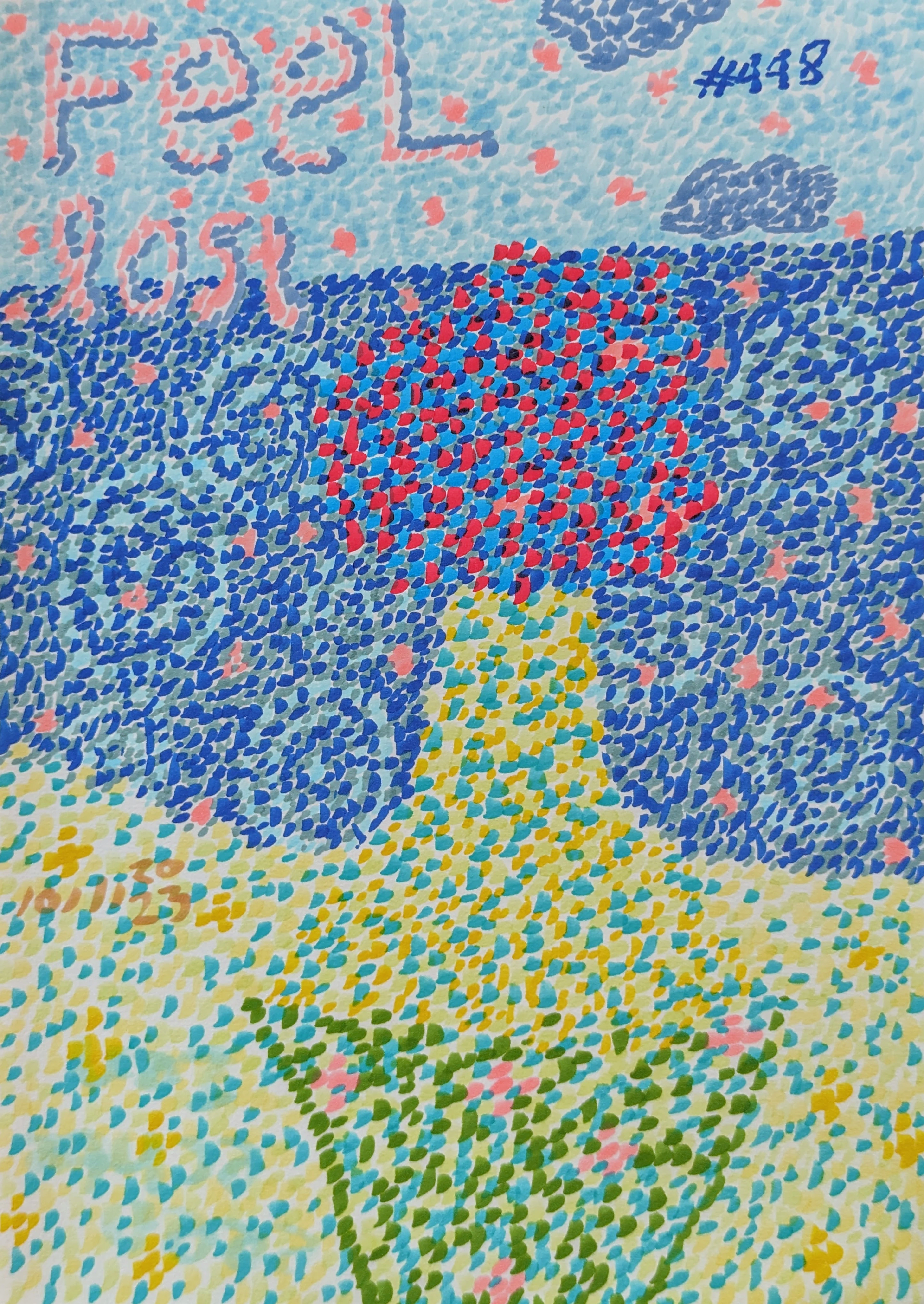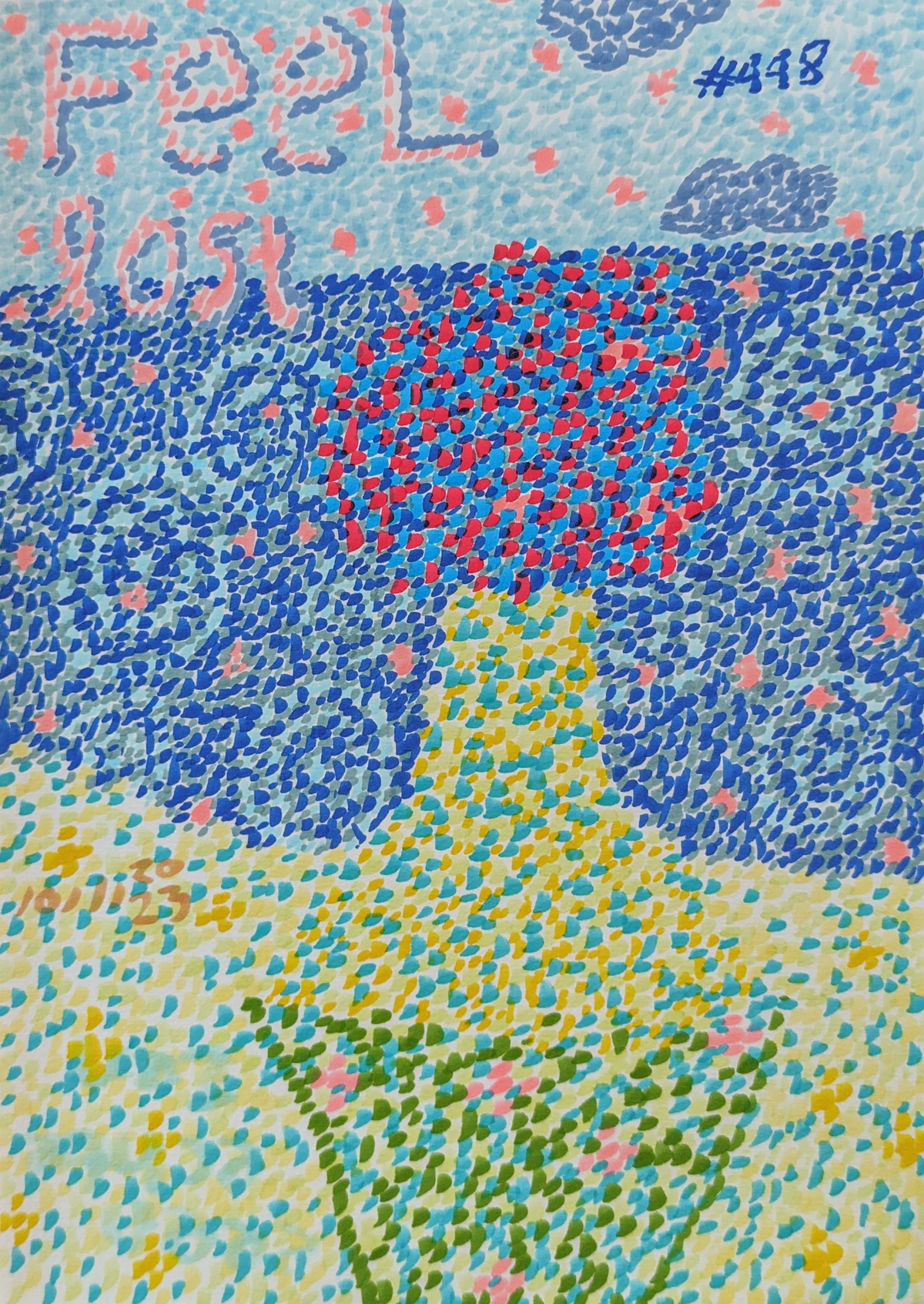
My Journey: Art Therapy for Anxiety & Stress Relief (No Talent Needed!)
Ever wonder if art can truly calm the chaos within? Join me as I share my personal experience with art therapy, revealing simple, powerful exercises that help manage anxiety and melt away stress. You don't need to be an artist to start!
Can Art Truly Soothe a Troubled Mind? My Journey with Art Therapy for Anxiety and Stress Relief
I’ll be honest with you, there was a time – maybe even last week, who's counting? – when the idea of "art therapy" felt a bit... well, fluffy. Like something you'd read in a glossy magazine while sipping green juice. My anxiety, on the other hand, felt very real, very heavy, and very much not solvable by a crayon. But life, as it often does, had a funny way of showing me I was spectacularly wrong. It wasn't some grand epiphany, more like a slow, quiet realization that crept up on me as I found myself instinctively reaching for a brush or a pencil during moments of overwhelm.
Turns out, art, in its purest, most unadulterated form, has become one of my most reliable anchors against the swirling currents of stress and the sharp edges of anxiety. And let me tell you, it's not about creating masterpieces. Not even close. It's about the process.
More Than Just Doodling: What is Art Therapy (To Me)?
When I talk about art therapy, I'm not necessarily talking about a clinical session with a certified therapist (though those are wonderful and highly effective!). I'm talking about a personal, intuitive engagement with creative materials to explore emotions, reduce stress, and improve self-awareness. It's a dialogue, often wordless, between me and whatever medium I'm using. It's about externalizing the internal mess, or sometimes, just finding a moment of quiet focus.
I know what you're probably thinking: "But I can't even draw a straight line!" Or, "My stick figures look like they've suffered a terrible accident." And believe me, I get it. For years, I believed art was only for the 'talented,' the 'gifted.' But here's the liberating secret: art therapy isn't about the outcome; it's about the doing. It's the act of mixing colors, the scratch of charcoal on paper, the rhythmic motion of a brush, that holds the magic. The finished product? That's just a souvenir of your journey, often surprising, sometimes baffling, but always, always yours.
The Whispers of Worry and the Roar of the Brush: How Art Intervenes
So, how does this whole "sloshing paint around" thing actually help when your mind is racing at a thousand miles an hour? For me, it boils down to a few powerful mechanisms:
- Distraction and Focus: When my thoughts are spiraling, picking up a brush forces my mind into the present. I have to focus on the color, the stroke, the texture. It’s a gentle, yet firm, redirect away from the internal monologue of dread. It's a bit like meditation, but with more vibrant colors and less sitting still. For me, it's a profound way to create some mindful moments.
- Emotional Release: Sometimes, words just aren't enough, or they feel too dangerous to utter. Art provides a safe container for those messy, unspeakable feelings. Anger can be aggressive, slashing strokes; sadness can be deep, muted blues. It's a way to let it all out without having to articulate a single thing. It truly becomes a language of line for my emotions.
- Self-Discovery: There have been countless times I've finished a piece and looked at it, genuinely surprised by what emerged. "Did I make that?" And then, slowly, connections start to form. Oh, that chaotic swirl? That's exactly how my week felt. That sudden splash of vibrant yellow? Maybe a glimmer of hope I hadn't consciously acknowledged. It's like finding your reflection in an unexpected mirror.
- Sensory Engagement: The tactile experience of art materials is incredibly grounding. The cool smoothness of clay, the gritty texture of sand mixed with paint, the scent of turpentine (or just Crayola crayons, no judgment here!). Engaging multiple senses pulls you out of your head and into your body, which is a big deal when anxiety has you floating somewhere far above yourself. I've often found myself exploring the role of texture in abstract art to deepen this connection.
- The Healing Power of Color: This one is huge for me. Colors have an undeniable impact on our mood, and consciously choosing and applying them can be incredibly therapeutic. Want to feel calmer? Reach for blues and greens. Need a boost of energy? Introduce some reds and yellows. I've written extensively about the healing power of color and the emotional language of color in my own work, and it's something I genuinely feel.
My Go-To Art Therapy Exercises for Those "Too Much" Moments
When the world feels like it’s pressing in, these are some of the simple, no-pressure art exercises I turn to. You can try them too, with whatever you have on hand – a pen and paper, old magazines, some leftover paint:
- Intuitive Painting/Drawing: This is probably my favorite. No plan, no expectations. Just pick a color, make a mark. Let the next mark respond to the last. Don't judge, don't overthink. It's about embracing spontaneity and just being. The aim isn't a pretty picture, it's a release.
- Scribble and See: Grab a piece of paper and a pen. Close your eyes (if you dare, or just don't look) and scribble furiously for 30 seconds. Open your eyes. What do you see in the chaos? Can you find faces, animals, objects? Outline them. This helps externalize internal chaos and find unexpected meaning.
- Color Your Feelings: Pick a feeling you're experiencing (e.g., overwhelmed, angry, joyful, numb). Now, choose colors, shapes, and lines that represent that feeling. Don't worry about what it 'should' look like. This is your visual diary entry.
- Collage of Hopes & Fears: Gather old magazines, newspapers, or even printouts. Tear out images, words, textures that resonate with your current anxieties or your future aspirations. Arrange them, glue them down. It’s a powerful way to visually process your inner landscape. There are many more art therapy exercises that are simple and impactful.

Beyond the Canvas: Integrating Art into Daily Calm
Art therapy isn't just about making art. It's also about how we engage with art in our environment. I've found that consciously curating the art around me, and taking moments to truly see it, can be just as beneficial:
- Mindful Viewing: Take five minutes to truly look at a piece of art – either one you own, one online, or even one in a book. What colors do you see? What textures? What emotions does it evoke? This meditative approach to art can be incredibly calming.
- Surrounding Yourself with Peace: The art you display in your home can significantly impact your mood. I often choose abstract pieces with calming blues or vibrant, uplifting colors because they resonate with the emotional landscape I want to cultivate. If you're looking to bring more of that calming energy into your space, you might find something that speaks to you in my collection.
- Visiting Art Spaces: There’s a unique tranquility in walking through a gallery or a museum. The quiet reverence, the shared experience of observing beauty. My own museum in 's-Hertogenbosch is a space where I hope others can find moments of peace and reflection, similar to what art provides for me.
Common Questions I Get (or Ask Myself) About Art Therapy
It's natural to have questions, especially when you're stepping into something new that involves creativity. Here are a few I often encounter, and my honest answers:
Question | My (Personal) Answer |
|---|---|
| Do I need to be good at art? | Absolutely not! This isn't about skill or talent. It's about self-expression and the therapeutic process. Your art is for you, not for a gallery. |
| What if I don't feel creative? | That's okay! Start with something simple. Scribble. Doodle. Tear paper. Creativity isn't a faucet you can always turn on; sometimes it's more like a leaky old pipe. Just let a few drops out. The act of doing often sparks the flow. |
| What materials do I need? | Anything! A pencil and paper, crayons, cheap watercolors, mud from your garden, fallen leaves. The simpler, the better, initially. Don't let a lack of fancy supplies be a barrier. |
| How often should I do it? | Listen to yourself. There's no right answer. Some days I need it daily, other weeks I might not touch a brush. It's not a chore; it's a tool for self-care. Use it when you feel the need. |
My Final Brushstroke: A Personal Invitation
Life throws us curveballs, and sometimes those curveballs come wrapped in anxiety and stress. While art therapy isn't a magic wand, it has certainly been a powerful tool in my personal toolkit for navigating those moments. It's a journey of self-discovery, of quiet contemplation, and sometimes, of gloriously messy emotional release. My own artistic journey has been intertwined with this understanding.
So, if you've ever felt overwhelmed, or just a little lost, I wholeheartedly encourage you to pick up whatever creative tool calls to you. Don't worry about the outcome. Just focus on the act. See what whispers back to you from the canvas, the clay, or even just a simple piece of paper. You might be surprised by the peace you find there. And if you're looking for more ways to incorporate art into your wellness routine, check out some more art therapy exercises for inspiration.




